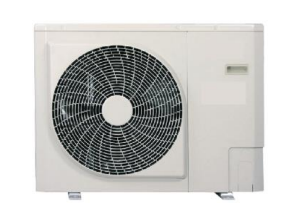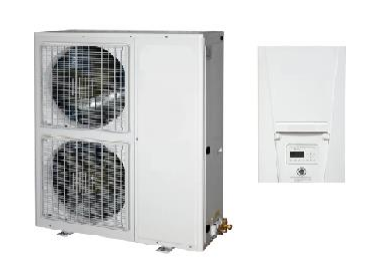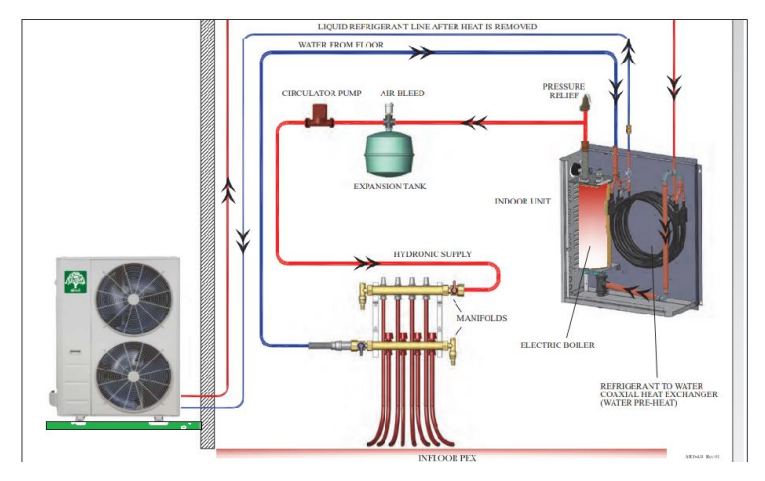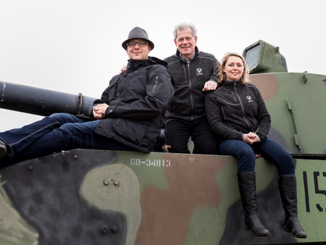
By Paul Vaillancourt • North American HVAC Products Ltd.
It’s no secret that heat pumps are making a come back in a big way and they are here to stay.
Driven by environmental concerns, policy, and government rebates—not to mention the ability to provide cooling—this fast-growing market trend is making a big impact in the HVAC industry and is now expanding to include hydronic heating systems.
Heat pump technology has advanced tremendously in the past decade, allowing the units to offer much higher performance at lower outdoor temperatures, even as low as -30 degrees C for some models. This was unheard of just a decade ago.
When it comes to hydronic systems, there are several options available to take the place of fossil fuel boilers. They can be classified in three distinct categories: monobloc, split system, and heat pump boiler. The heat pumps can be further classified as conventional, inverter, or cold climate heat pumps (CCHP). The selection for the type of heat pump that will be used can be dependent on a mechanical contractor’s ability to support the product they install, their level of comfort with the system, and the application.
Let’s talk about the advantages and disadvantages for each type of system.
Monobloc Heat Pump
Advantages:

These air-to-water heat pumps are totally self-contained and only require water lines to be connected from the outdoor unit to the indoor buffer tank. They are typically equipped with inverter driven compressors that make them quiet and efficient. Some models include the circulator built into the appliance, and they usually include a small electric heater (usually 3Kw or less) to help supplement the unit’s capacity during colder weather. These units are installer friendly since there are no refrigeration field connections to make.
Disadvantages:
Monobloc systems require freeze protection throughout the entire hydronic system unless a heat exchanger is installed downstream of the buffer tank. The cost for a heat exchanger, circulator, and other components may often exceed the cost of anti-freeze for the entire system. Propylene glycol should be the anti-freeze of choice.
- Technical expertise is required to service or repair the units. The skills required include refrigeration, controls and hydronics.
- A secondary source of energy should be included in the system design in the event of a unit failure.
Split System Air-to-Water Heat Pumps
Advantages:
This type of system uses an indoor module where a refrigerant-to-water heat exchanger is installed. Like a Monobloc but separated into two components (indoor and outdoor), the split system does not require anti-freeze in the system since there are only refrigerant lines between the indoor and outdoor units.

Disadvantages:
Like monobloc units, the split system indoor units may include a small electric heater and a circulator. The system design should include a back-up system in the event of a unit failure. Split system units require the same skill level as Monobloc systems with the addition of the skills and tools required to install a line set, charge a system, and proper commissioning.
Heat Pump Boiler Systems
The heat pump boiler system has many advantages since it offers great technology in its simplest form. It is an electric boiler equipped with a refrigerant-to-water heat exchanger. The electric boiler can be operated independently from the heat pump, in combination with the heat pump, or as a heat pump only system. This type of system allows the designer to use the heat pump for radiant floor systems and use the boiler for high temperature loads, such as domestic hot water through an indirect water heater. The boiler can produce 180 degrees F water for this application. Heat pump boilers are typically available with up to 20Kw of electric heat.

Advantages:
- Quick and simple installation
- 100% back-up built in
- Boiler can be operated stand-alone with heat pump installed at a later date
- No anti-freeze required
- Quiet and efficient
- Extremely reliable due to simplicity in design
- Can be used with indirect tank for 100% domestic hot water
- Designed to connect with inverter heat pumps for maximum efficiency
Disadvantages:
- Requires a refrigeration technician for line set, charging, and commissioning of the heat pump system.
All Systems
While there is mention in this article about systems that may not require anti-freeze, this may not be the case where extremely cold temperatures would require that the indoor portions of a system be glycolyzed for burst protection. It is also good practice to use propylene glycol for systems producing chilled water for cooling. ■
Paul has been in the HVAC industry for over 40 years with his roots in working for the family business in the Ottawa area in the 1970s. His thirst for knowledge over the years, and always wanting to find a better way, has afforded him a high level of expertise in many areas of the HVAC industry. He is the National Sales Manager / Technical Trainer for North American HVAC Products Ltd. He can be reached at paul.v@nahvac.com



